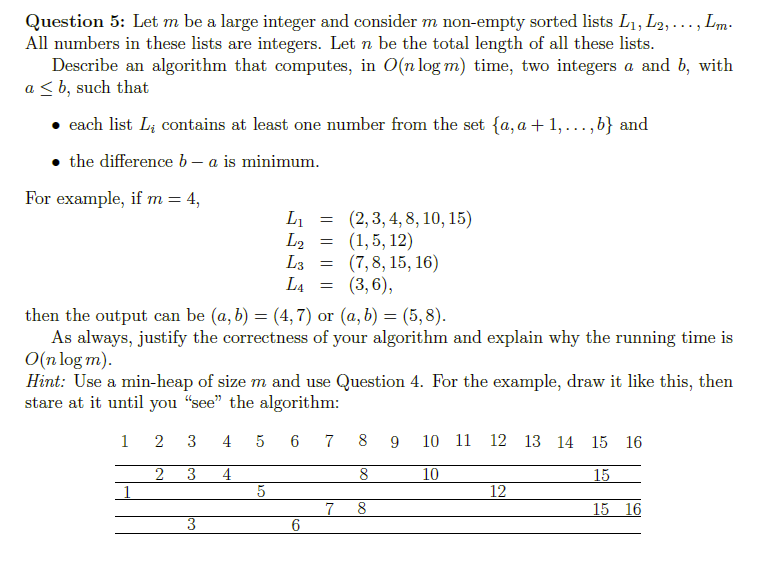Answered step by step
Verified Expert Solution
Question
1 Approved Answer
Question 5 : Let m be a large integer and consider m non - empty sorted lists L 1 , L 2 , dots, L
Question : Let be a large integer and consider nonempty sorted lists dots,
All numbers in these lists are integers. Let be the total length of all these lists.
Describe an algorithm that computes, in time, two integers a and with
such that
each list contains at least one number from the set dots, and
the difference is minimum.
For example, if
then the output can be or
As always, justify the correctness of your algorithm and explain why the running time is
Hint: Use a minheap of size and use Question For the example, draw it like this, then
stare at it until you "see" the algorithm:

Step by Step Solution
There are 3 Steps involved in it
Step: 1

Get Instant Access to Expert-Tailored Solutions
See step-by-step solutions with expert insights and AI powered tools for academic success
Step: 2

Step: 3

Ace Your Homework with AI
Get the answers you need in no time with our AI-driven, step-by-step assistance
Get Started


